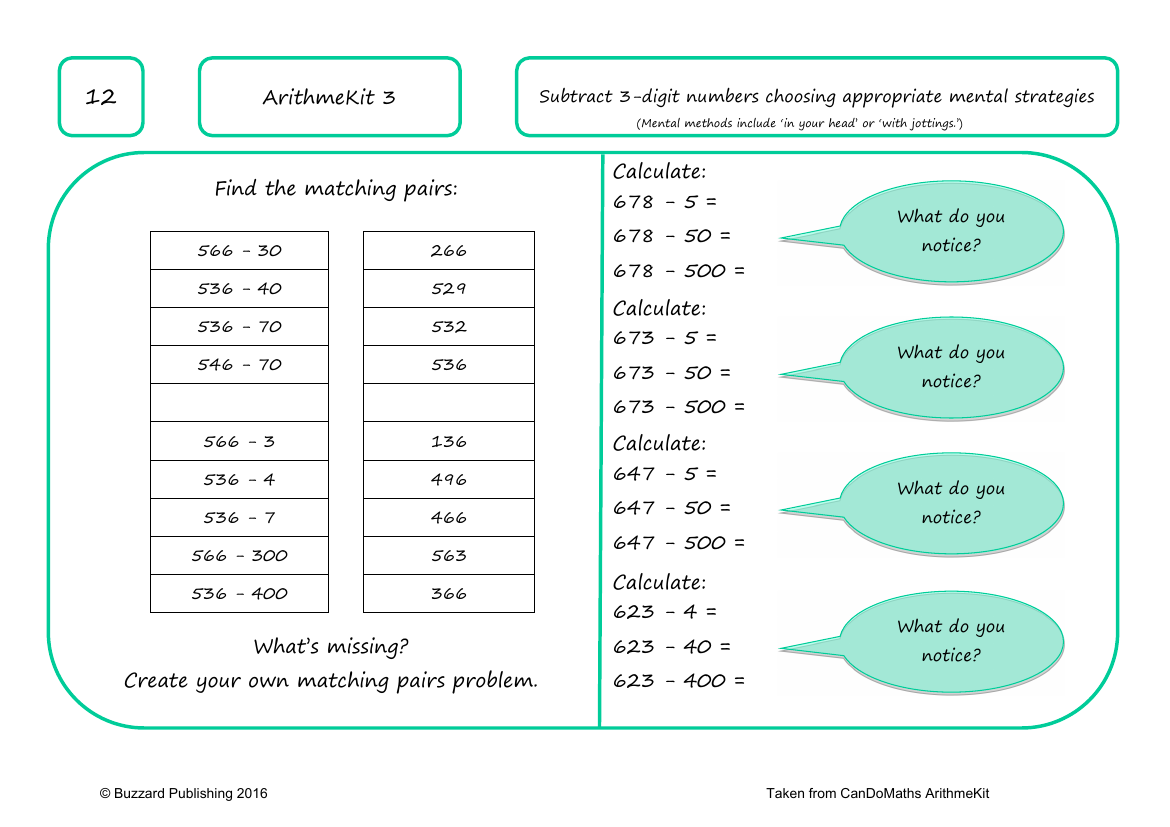Subtract 3-digit numbers choosing appropriate mental strategies

Maths Resource Description
Subtraction of three-digit numbers requires the use of mental strategies that can be performed 'in your head' or with the aid of 'jottings'. For example, when subtracting single units, tens, or hundreds, one can easily adjust the respective digits in the number. The calculations show that when subtracting 5 from 647, the result is 642; subtracting 50 yields 597, and subtracting 500 gives us 147. Similarly, for the number 673, subtracting 5, 50, and 500 results in 668, 623, and 173, respectively. This pattern of subtracting units, tens, and hundreds is consistent across various numbers, as demonstrated with 678 and 623, where the results are 673 and 628, and 178 and 583, respectively, after the same subtractions.
Further exercises involve matching pairs and creating problems where certain digits are missing. For instance, subtracting 4, 40, and 400 from 623 results in 619, 583, and 223. Students are encouraged to notice patterns, such as the ones digit remaining unchanged when tens are subtracted. The exercises also include problems with negative numbers, providing opportunities for students to explore different solutions using the digits 0-9. Coco's hypothesis that only the tens digit changes when subtracting tens from a three-digit number is tested, clarifying that the ones digit indeed remains the same. These exercises are part of the ArithmeKit 3.12 from Buzzard Publishing's CanDoMaths ArithmeKit, which focuses on enhancing mental arithmetic skills.
